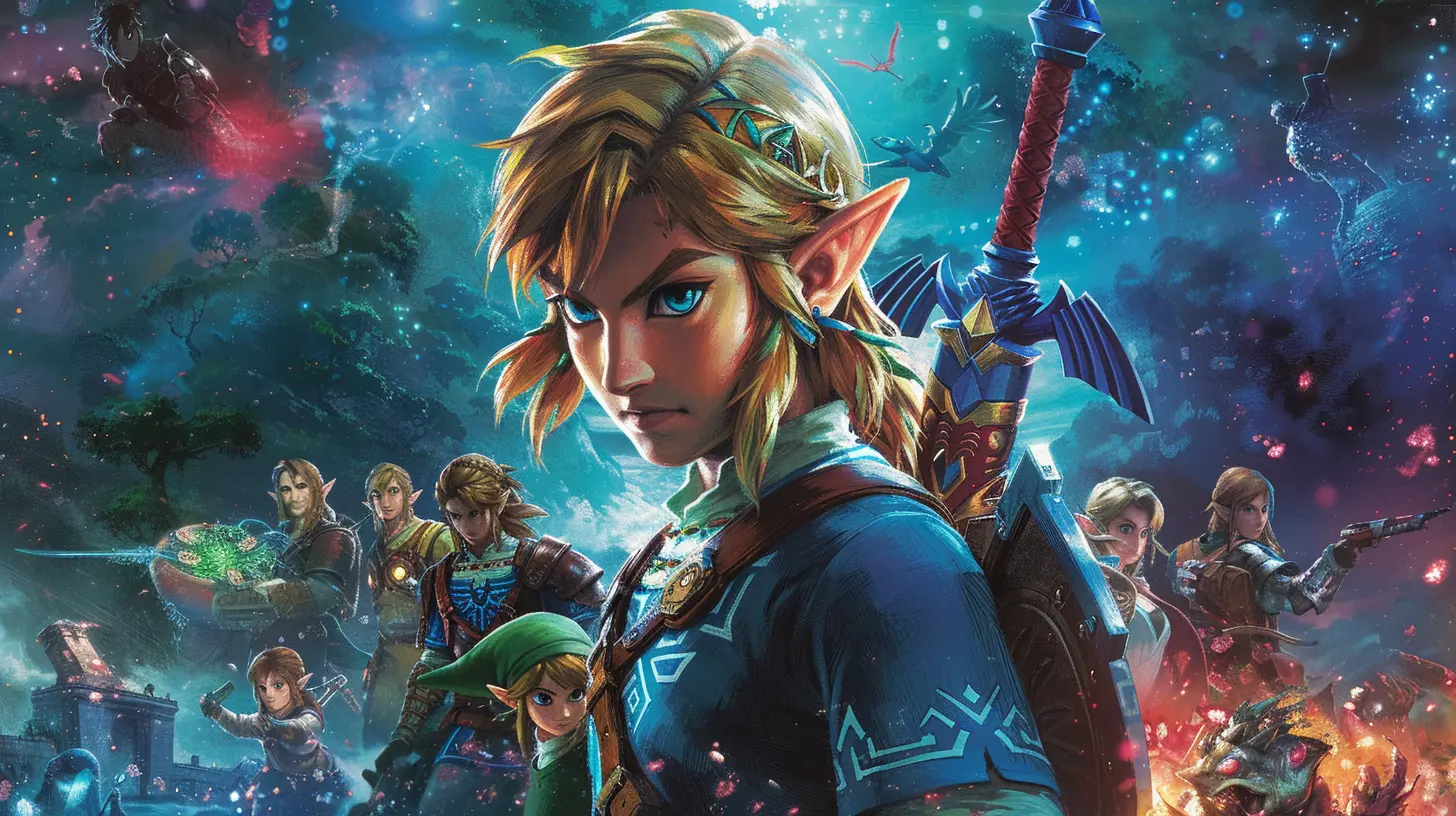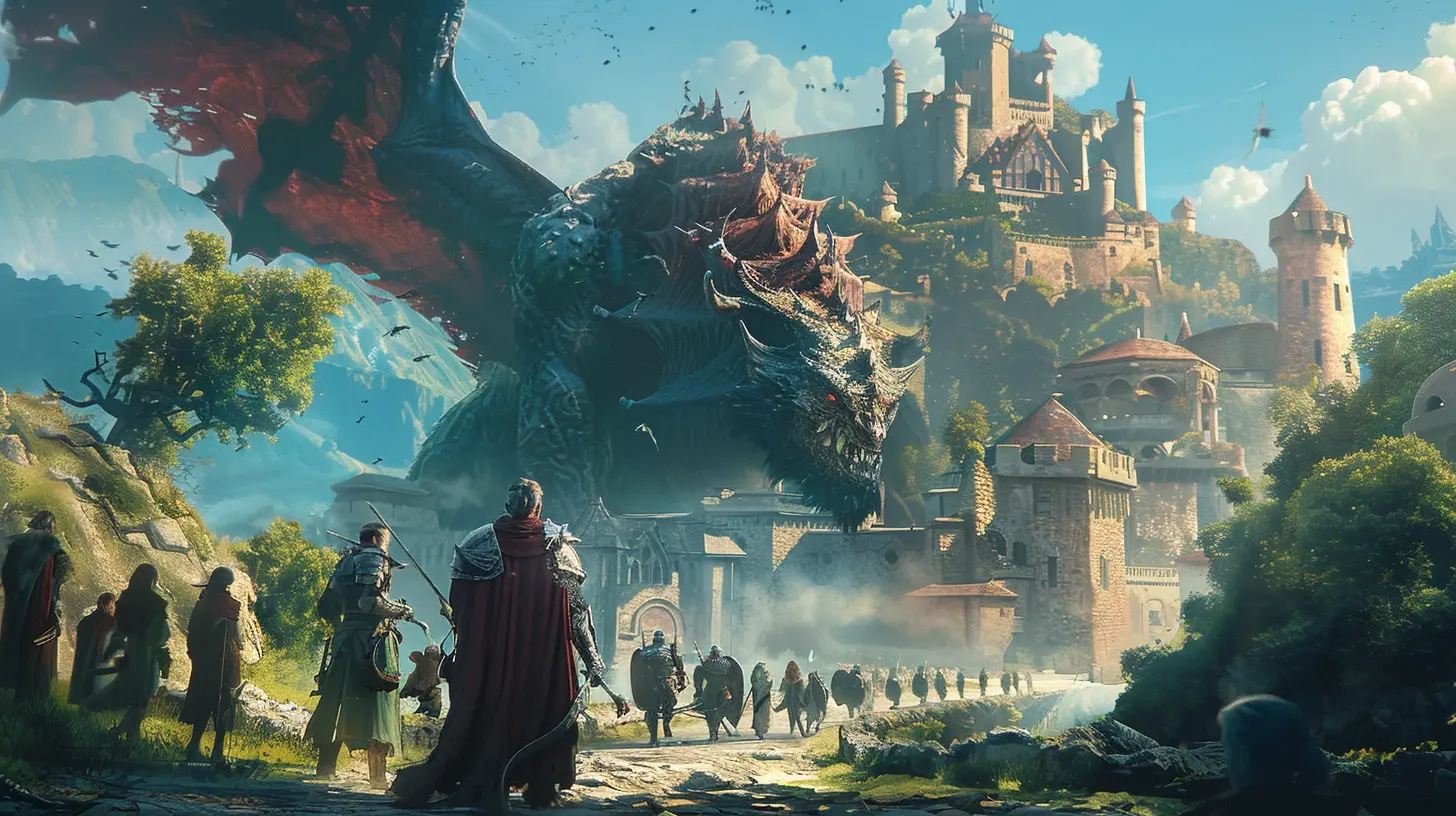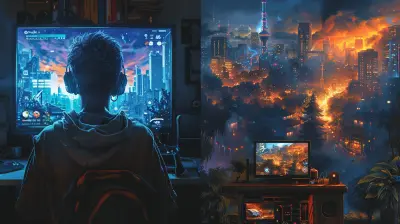How the Metaverse is Tying Virtual Worlds to the Real Gaming Landscape
5 October 2025
Ah, the metaverse. It’s the buzzword that just won’t die. Like that one pair of socks that keeps popping out of the dryer no matter how many times you try to lose it, the metaverse is everywhere. From gaming companies to tech giants, everyone wants a piece of this surreal virtual pie. But what does it actually mean? And why is it suddenly tying the virtual worlds of gaming to the real world, like an overzealous kid cramming Play-Doh into every crack?
Let’s break it down. Grab your headset (or just your imagination if you’re broke like the rest of us), and let’s dive into this digital rabbit hole. Stick with me, and I promise I’ll make it worth your caffeine-deprived attention span.
What Is the Metaverse? Another Fancy Tech Word?
Before we go full throttle, let’s pause for a second. What on Earth—or, in this case, what in cyberspace—is the metaverse?Picture this: The metaverse is like the lovechild of the internet and virtual reality, raised by a gaming console and babysat by AI. It’s essentially a shared, immersive digital universe where you can interact with others, play games, shop, attend concerts, and even—brace yourself—go to virtual business meetings. (That last one? Not exactly what I’d call a dream destination.)
The term was first coined in Neal Stephenson’s 1992 sci-fi novel Snow Crash. Yep, that’s right—it’s older than most of the TikTok crowd. Flash forward to today, and the metaverse has become the It Girl of tech trends, promising to merge our real lives with virtual ones in ways that sound super cool… or super dystopian. Your call.
Virtual Worlds Meet Reality: A Gaming Love Story
So, how exactly is the metaverse tying virtual gaming worlds to our messy, real-world existence? Let’s dig in.First off, the gaming industry has been the MVP in building virtual worlds. From MMORPGs like World of Warcraft to sandbox games like Minecraft, we’ve been hanging out in immersive digital spaces long before Mark Zuckerberg donned his VR goggles and renamed Facebook. But here’s the kicker: the metaverse is now blurring the lines between these game worlds and our day-to-day lives, like a glitch in the Matrix.
For example, you’ve got games like Fortnite and Roblox hosting virtual concerts where millions of players (or their avatars) show up to vibe to Travis Scott or Lil Nas X. And people aren’t just gaming anymore—they’re socializing, shopping, and even earning real-world money in these spaces. Basically, it’s like going to a mall, but without the awkward run-ins with your high school nemesis.
What’s in It for Gamers? (Besides Bragging Rights)
If you’re a gamer, you’re probably wondering, “Cool story, bro, but what does this actually do for me?” Oh, my friend, the metaverse is shaking up the gaming landscape in ways that might just blow your mind—or at least give you a reason to buy that VR headset you’ve been eyeing.1. Immersive Experiences
Remember when gaming was just about smashing buttons on a clunky controller? Those were the good old days, but now we’re stepping into fully immersive worlds where you are the character. Thanks to advancements in VR and AR, you’re no longer just playing the hero—you’re living the adventure. Think Ready Player One, but without the evil corporations (for now).2. Real-World Stakes in Virtual Worlds
The metaverse has introduced a little something called play-to-earn. Translation: you can make bank while gaming. Platforms like Axie Infinity and The Sandbox let players earn cryptocurrency or NFTs (non-fungible tokens) that have real-world value. Suddenly, your mom can’t tell you to “stop wasting your life on video games” when you’re paying rent with virtual dragon eggs.3. Social Gaming on Steroids
Remember the good ol' days of couch co-op gaming? Well, the metaverse is the online version of that but jacked up on energy drinks. With persistent worlds where players can hang out, chat, and work together, gaming has evolved into a full-fledged social experience. You’re not just fighting pixelated monsters anymore—you’re forming bonds, building communities, and maybe, just maybe, finding love in a hopeless (digital) place.
But Wait, There’s a Catch (There’s Always a Catch)
Of course, nothing this shiny comes without a few flaws. The metaverse might sound like a gamer’s paradise, but let’s not ignore the potential pitfalls.1. Privacy Nightmares
If you thought ad tracking on social media was creepy, wait until advertisers start following you around the metaverse. Imagine trying to enjoy a virtual sword fight while a pop-up ad for energy drinks blocks your field of vision. Hard pass.2. The Cost of Entry
Sure, the metaverse sounds inclusive, but let’s talk hardware. A decent VR headset doesn’t exactly fall under “impulse buy.” And don’t even get me started on the cost of a gaming PC that can actually run these high-fidelity worlds. For many of us, the metaverse is about as accessible as a VIP yacht party in Monaco.3. The Dreaded NFT Scam Zone
Ah, NFTs. Love them or hate them, they’re a big part of the metaverse economy. But don’t get too starry-eyed thinking you’ll become a virtual art tycoon. The NFT market is rife with scams and get-rich-quick schemes. It’s like the Wild West out there—approach with caution, cowboy.What Does the Future Hold? (Do We Even Want to Know?)
Now that we’ve waded knee-deep into the metaverse hype, let’s peek into the future. Spoiler alert: it’s a mixed bag.On one hand, the metaverse has the potential to revolutionize gaming, turning it into the ultimate form of entertainment and social connection. Imagine battling space aliens with your friends in a photorealistic virtual world, then hopping over to a virtual marketplace to sell your hard-earned loot for real-world cash. Sounds pretty cool, right?
But on the other hand, there’s the whole dystopian vibe to consider. Will the metaverse become a corporate cash grab where every blade of virtual grass is sponsored by a brand? Will we all turn into couch potatoes (or VR headset potatoes) who’d rather live in fantasy worlds than face reality? Only time will tell.
So, Is the Metaverse the Future of Gaming?
Short answer? Probably. Long answer? Who the heck knows. The metaverse is still in its awkward teenage phase, trying to figure out what it wants to be when it grows up. But one thing’s for sure: it’s not going anywhere anytime soon.For gamers, this brave new world offers endless possibilities, from immersive gameplay to real-world rewards. But it also comes with its share of challenges, from accessibility issues to privacy concerns. Whether you’re ready to embrace it or not, the metaverse is tying virtual worlds to the real gaming landscape in ways we’re only beginning to understand.
So, strap in, gamers. The future is here, and it’s digital, weird, and kind of awesome. Just don’t forget to take off your headset every now and then to see the actual sun. (It’s still there, I promise.
all images in this post were generated using AI tools
Category:
Gaming IndustryAuthor:

Whitman Adams
Discussion
rate this article
1 comments
Andrew Turner
The Metaverse bridges the gap between virtual and real gaming by fostering immersive experiences that intertwine social interaction, economic systems, and user-generated content. As players navigate these interconnected worlds, the boundaries blur, creating new opportunities for engagement, creativity, and community in both domains.
October 10, 2025 at 4:46 PM

Whitman Adams
Thank you for your insight! The Metaverse truly enhances the gaming experience by merging virtual and real elements, paving the way for innovative interactions and community-building.


